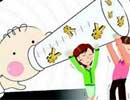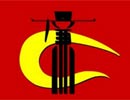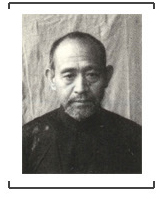
铃木启久(Suzuki Keiku) 图片来自国家档案局网站
人民网7月3日电 国务院新闻办公室今天上午举行新闻发布会,请中央档案馆副馆长李明华介绍中央档案馆在互联网上公布《日本战犯的侵华罪行自供》的有关情况并答记者问。与此同时,国家档案局网站也刊发了相关史料。
根据国家档案局网站发布的日本战犯铃木启久1954年7月的笔供,其1890年生于日本福岛县,1934年到中国东北参加侵华战争并任步兵第28联队长辅佐。后于1945年4月任日本陆军中将兼第117师团长。同年8月31日,在吉林被俘。
铃木启久交待的重要罪行有:
1934年6月前后,在锦州“杀害了2名中国农民”。
1935年3月上旬前后,援助高木大佐“于上板城附近烧掉了两个共有300户的村庄,并杀害了很多中国人民”。
1940年9月,在安徽宣城作战中,对躲在屋内的约50名抗日军人“以毒瓦斯将其全部惨杀了”。
1941年在安徽巢县设置慰安所,并诱拐了20名“中国妇女及朝鲜妇女做为慰安妇”。
1941年11月,在河北枣强攻击八路军,“杀害了10人,并烧毁约有600户两个村庄,同时屠杀了100名中国农民”。
1941年12月,“强制居于长城线附近2公里以内的”“居民迁移,使之成为无人区”。
1942年1月,在唐山一带命令田浦大佐“扫荡,烧毁了约有800户的房屋,并屠杀了1千名中国的农民”。
1942年4月,在河北丰润田官营“大力的虐杀了八路军,在鲁家峪攻击洞穴时使用毒瓦斯惨杀了八路军干部以下约一百人,”又将“逃至鲁家峪附近村庄避难的235名中国农民用野蛮的办法惨杀了(将其中的妊妇剖腹了),烧毁房屋约800户,将往玉田送交的俘虏中杀害了5人,强奸妇女达百名之多”。
1942年7月,在丰润将“民房烧毁了500户,惨杀了约100名中国农民”。
1942年9—12月,为把迁安、遵化等地“变为无人地带,即强制该区的居民全部迁移。”“在该地区烧毁的房屋达一万户以上,强迫搬走的人民达数万以上,被惨杀者也甚多。”
1942年10月,“对滦县潘家戴庄1280名的农民采取了枪杀、刺杀、斩杀及活埋等野蛮办法进行了集体屠杀,并烧毁了全村800户的房屋”。
1942年,命令日军盘踞地区“皆设有慰安所,并引诱约60名的中国妇女任慰安妇”。
1944年5月,在河南新乡“向抗日军游击队进行攻击并将其杀害约10人,同时将战场附近的村庄烧毁约300户,杀害约100名的中国农民”。
1944年7月,在河南封丘“杀害了约40名的抗日军游击队,并在其附近烧毁了一个约有400户的村庄,杀害了约100名的中国农民”。
1944年8月,向河南怀庆抗日军队“进行攻击,并杀害约10人,将农民的房屋烧掉了约400户,虐杀了约30名的中国人民”。
1944年11月,“我命令步兵部队侵略林县南部地区后,在撤出该地区之同时,由防疫给水班在三、四个村庄散布霍乱菌,因此后来我接到‘在林县内有100名以上的中国人民患霍乱病,死亡人数也很多’的报告”。之后,又在长路县某村“将该村约300户的房屋烧毁,并将该村的660名中国农民以极野蛮的办法虐杀了,即枪杀、刺杀、烧杀等极惨暴的方法” 。“另外,在此侵略中,我的部下又共杀害了30名俘虏”。
“我为了试验以空气注射杀人的方法,于1945年春在怀庆的师团野战病院命令“进行试验,即给予当时住院的1名中国伪县警备队员极高的代价进行了试验”。
1945年春,在怀庆一村庄“将该村庄的农民杀害了约500人,将全村600户房屋烧掉了”。
1945年春前后,将焦作“附近村庄烧毁了约400户房屋,惨杀约100名中国农民”。
1945年,在“蟠居地区命令设立所谓慰安所,并引诱约60名的中国妇女和朝鲜妇女任慰安妇”。
1945年7月,中旬“在醴泉进行了侵略,惨杀了约40名中国人民”。
“在侵略中国期间”,“只我个人的记忆即杀害了5470名中国人民,烧毁和破坏中国人民的房屋18229户,其实际数字很(可)能还多”。
笔供英文内容提要(Abstract of the Written Confessions in English)
Suzuki Keiku(铃木启久)
According to the written confession of Suzuki Keikuin July 1954, he was born in Fukushima Prefecture, Japan in 1890 and went to northeast China in 1934 to join the Japanese War of Aggression against China, serving as assistant commander of the 28th Infantry Regiment. In April 1945, he became lieutenant general and commander of the 117th Division. He was captured in Jilin on 31August 1945.
Major offences:
Around June 1934: “killed two Chinese peasants” in Jinzhou;
Around early March 1935: assisted Colonel Takagi in “burning down two villages with a total of 300 households near Shangban City and killing many Chinese people”;
September 1940: “used poison gas to brutally kill all” of the 50 or so anti-Japanese soldiers hidden indoor in a battle in Xuancheng, Anhui;
1941: set up a comfort station in Chaoxian County, Anhui and abducted 20 “Chinese and Korean women as comfort women”;
November 1941: in an attack on the Eighth Route Army in Zaoqiang, Hebei, “killed 10 soldiers, burned down two villages with around 600 households, and also slaughtered 100 Chinese peasants”;
December 1941: “forced inhabitants” “in the area within 2 kilometers of the Great Wall” “to relocate and made the area a depopulated zone”;
January 1942: ordered Colonel Taisuke to “burn down the houses of about 800 households and slaughter 1,000 Chinese peasants in a mop-up operation” in Tangshan area;
April 1942: in Tianguanying, Fengrun, Hebei, “brutally killed soldiers of the Eighth Route Army and used poison gas in an attack to murder about 100 cadres and soldiers of the Eighth Route Army in the caves in Lujiayu” and “cruelly killed 235 Chinese peasants seeking refuge in a village near Lujiayu (cutting open the bellies of pregnant women among them), burned down houses of about 800 households, killed 5captives to be delivered to Yutian, and raped as many as100 women”;
July 1942: in Fengrun, “burned down civilian houses of around 500 households and brutally killed about 100 Chinese peasants”;
From September to December 1942: in order to “create depopulated zones, i.e. to force all the residents to move out” of regions including Qian’an and Zunhua, “burned down the houses of over 10,000 households in those regions, forced tens of thousands of people to relocate and also massacred many people”;
October 1942: “murdered 1,280 peasants in Daizhuang Village, Panjia, Luanxian County in such cruel ways like shooting, bayoneting, slashing and burying alive, and burned down the houses of all 800 households in the village”;
1942: ordered “to set up comfort stations in all” regions where Japanese troops were stationed and “to lure about 60 Chinese women to serve as comfort women”;
May 1944: in Xinxiang, Henan, “attacked anti-Japanese guerrilla forces and killed around 10 of their soldiers, burned down about 300 houses in villages close to the battlefield, and killed about 100 Chinese peasants”;
July 1944: in Fengqiu, Henan, “killed about 40 soldiers of the anti-Japanese guerrilla forces, burned down a neighboring village of about 400 households, and killed about 100 Chinese peasants”;
August 1944: “attacked and killed about 10 soldiers” of the anti-Japanese troops in Huaiqing, Henan, “burned down farmhouses of about 400 households, and brutally killed some 30 Chinese people”;
November 1944: “I ordered the infantry to invade the southern part of Linxian County, and, when the troops were pulling out of the region, I ordered the Epidemic Prevention and Water Supply Squad to spread cholera virus in three or four villages. Afterwards, I received a report saying that ‘more than 100 Chinese people in Linxian were infected with cholera, and the death toll was also high’”; after this, in a village in Changlu County, “burned down the houses of around 300 households and killed 660 Chinese peasants of the village in extremely brutal ways like shooting, bayoneting and burning”; “Also during this attack, 30 captives were killed by soldiers under my command.”;
“In order to test the method of killing people with air injection, I ordered in spring 1945 the division field hospital in Huaiqing to “conduct an experiment, which is to test it on a hospitalized Chinese soldier of the Puppet County Guards with an extremely high price”;
Spring 1945: “killed about 500 peasants and burned down the houses of all the 600 households” in a village in Huaiqing;
Around spring 1945: “burned down the houses of around 400 households in villages” near Jiaozuo, and “brutally killed some 100 Chinese peasants”;
1945: “ordered to set up comfort stations in the regions occupied by the Japanese troops, and lured about 60 Chinese and Korean women to serve as comfort women”;
Mid-July 1945: “invaded Liquan, and slaughtered about 40 Chinese people”;
“During the aggression against China”, and “based on my memory alone, 5,470 Chinese people were killed, and the houses of 18,229 Chinese households were burned down or damaged. The actual number (may) be much higher.”

 分享到人人
分享到人人 分享到QQ空间
分享到QQ空间



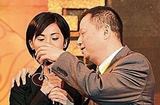

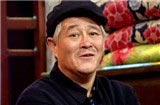
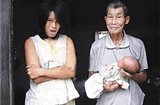



 恭喜你,发表成功!
恭喜你,发表成功!

 !
!
















